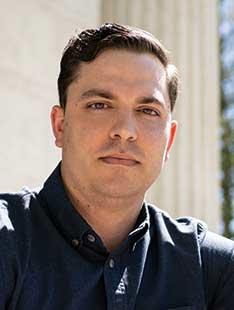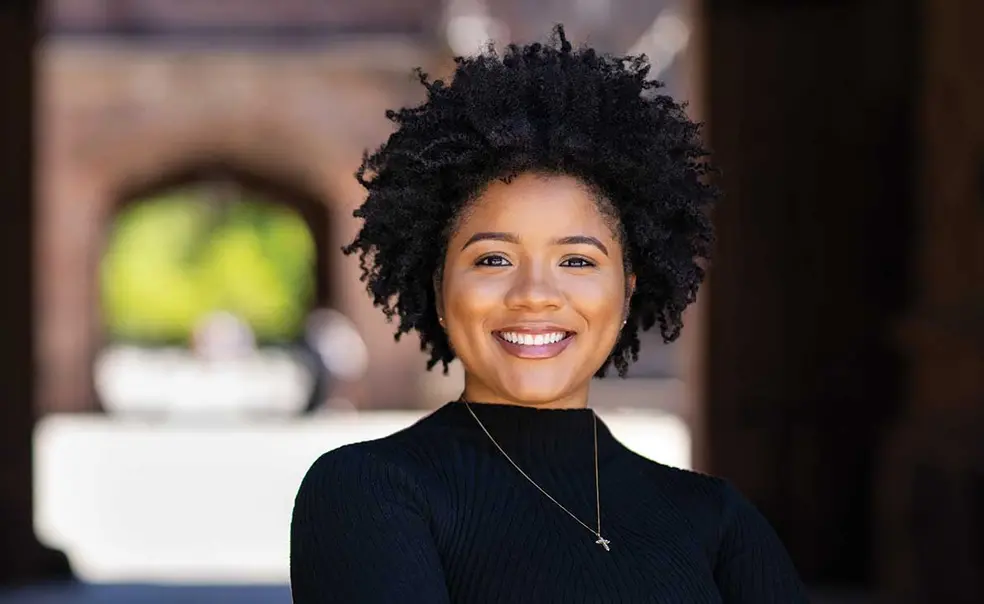Princeton Is Gradually Accepting More Transfer Students
Entering its fifth year, reinstated program pushes through growing pains to expand
When politics major Kaller Roemer ’23 first stepped into his “Insurgency and Counterinsurgency” class at Princeton this spring, he was prepared. Having spent four years as an infantryman in the United States Army, including a deployment to Iraq, he felt right at home contributing to class conversations.
But that isn’t always the case for Roemer, one of 45 transfer students who have enrolled in the four years since the University reinstated the transfer program in 2018. He said that transfer students, more than half of whom are veterans, are “kind of the black sheep on campus. We’re older, we have these experiences that most students don’t have, and it kind of feels like you’re left out a little bit.”
Princeton is attempting to remedy that in the midst of an expansion: The University recently announced that it will gradually increase the number of transfers on campus to about 100 over the coming years. Starting this fall, Princeton plans to enroll 25 to 35 transfers each year.
Some things will stay the same, like mandatory pre-orientation over the summer and a transfer-specific writing seminar, but other aspects are changing in response to a review of the program that was conducted during the 2020–21 academic year.
Starting this fall, transfer students, some of whom come to Princeton with spouses and/or children, will no longer be required to live in University housing. In addition, transfers will be able to receive credit for up to three additional courses beyond what was previously possible, allowing them to take a reduced course load for one or more semesters. The Emma Bloomberg Center for Access and Opportunity is also filling the new position of associate director for transfer programs.
These policies and resources are especially important since the transfer program has been designed as an access and inclusion initiative, according to Alex Bustin ’08, director of transfer, military, and international admission. He said the program is “really an opportunity to increase our diversity of our student body, and also [to] increase the learning experience that the overall students get from more diverse perspectives with different life experiences.”
While Princeton would not provide details on the transfer population, University spokesman Michael Hotchkiss said, “the large majority of enrolled transfer students have been some combination of first-generation college students, community college students, and/or active duty/veteran military. A very small number have been recruited athletes.”

Roemer thinks the changes are all steps in the right direction, but more could be done, including additional financial assistance and hiring a veteran administrator and advocate. “I think that the school needs to acknowledge that we have different needs,” he said.
Hotchkiss clarified the legal limitations of Princeton’s financial assistance in a statement to PAW, noting that aid “may be offered only for expenses outlined in federal regulations. The Undergraduate Financial Aid Office adheres to the regulations in calculating the cost of attendance for students during a period of enrollment, which includes room, board, and personal expenses. In keeping with the regulations, the cost of attendance is developed for an individual enrolled student. Consequently, these defined expenses exclude those incurred for spouses and, in some cases, dependents.”
Beianka Tomlinson ’24, a chemistry major who transferred from Union County College in New Jersey, shares the view that transfers have different needs than traditional undergrads. “I feel like Princeton in general provides services, but not specifically for transfer students,” she said.
Despite this, Tomlinson loves Princeton’s transfer program — so much that even though she was admitted with sophomore standing, she has since decided to spend four full years on campus.
According to Keith Shaw, who directs the transfer program, some others have made that decision, too.
“I think, over time, most of the students have come to see the advantages of the additional time to work with faculty, to gain expertise in their major, to be able to benefit from the alumni network, to secure internships, and pursue those sorts of opportunities,” he said.
Last fall, Tomlinson decided to share what she’s learned by serving as a mentor with the Transfer Mentor Program, which was conceived as a way to pair upperclass transfers with those who are new to campus. Transfer students also gather for occasional dinners and special events.
Lauren Maynard ’24, a sociology major, appreciates the transfer community that has formed at Princeton. She was only on campus for a few weeks when her sister was killed in a car accident. Immediately, fellow transfers, whom Maynard then considered “technically strangers,” stepped up to help.
“They became a community that lifts you up, and that was just like one of the most … beautiful aspects,” she said, adding that she didn’t expect the group to be so close-knit. “Once you become a transfer, you’re a part of the transfer community.”
Meanwhile, Tomlinson, who is nearing the end of her second year at Princeton, doesn’t spend as much time with the transfer community as she once did. She stays busy with her duties as vice president of Princeton Caribbean Connection and as an advising fellow working with low-income high schoolers through Matriculate, a national nonprofit. In the fall, she will also be a residential college adviser at Yeh College (see page 12).
“We’re all in our own world,” she said. “We do come together and … catch up, and then we go back into the community again to do what we do.”
Shaw considers that a success: “If I do my job properly, the transfer students will successfully learn to navigate the University and find community and mentorship outside the program, and therefore don’t need me anymore,” he said. “If I rendered myself obsolete, I’ve done my job properly, right?”
This story has been updated to clarify Princeton’s financial assistance for transfer students.












2 Responses
stevewolock
3 Years AgoFor the Record
In an article about the expansion of Princeton’s transfer program (On the Campus, June issue), a student raised the issue of additional financial assistance for transfer students. The story omitted a statement from University spokesman Michael Hotchkiss about legal limitations on Princeton’s financial assistance.
Hotchkiss said that aid “may be offered only for expenses outlined in federal regulations. The Undergraduate Financial Aid Office adheres to the regulations in calculating the cost of attendance for students during a period of enrollment, which includes room, board, and personal expenses. In keeping with the regulations, the cost of attendance is developed for an individual enrolled student. Consequently, these defined expenses exclude those incurred for spouses and, in some cases, dependents.”
Stephen L. Pevar ’68
3 Years AgoMutual Benefits of a Transfer Program
I’m pleased that Princeton reinstated the transfer program and that a greater effort is being made to orientate the transfer students (On the Campus, June issue). I was one of six transfer students accepted into the Class of 1968. I entered as a junior. By then, of course, most students had established their friendships. I’m a bit withdrawn anyway, and I found it difficult to make close friends. Plus, within days after I arrived, the fall bicker began, and I had no idea how to choose. It would have helped if I had someone I could go to for both academic and personal advice. Yes, I loved every minute of my time at Princeton, but I felt like a fish out of water for several months.
By the way, I came from a coed college, and Princeton was debating whether to go coed. I was able to offer an opinion based on experience.
In any event, transfer students can both benefit from Princeton and contribute to it, and I heartedly support the University’s efforts to accept transfers.